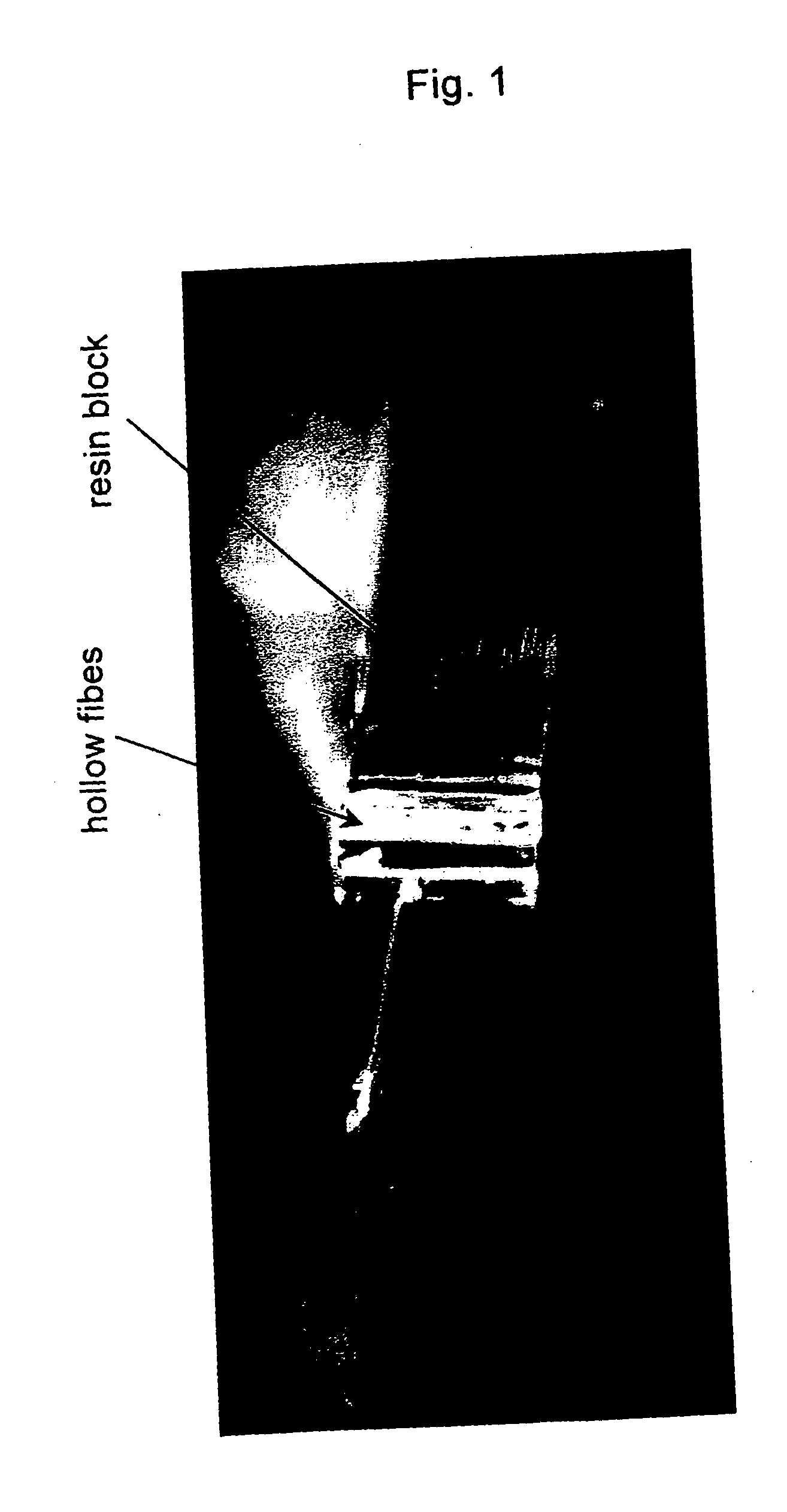Micro-array of organism-associated substance
a technology of organism-associated substances and microarrays, which is applied in the field of microarrays, can solve the problems of curvature of microarrays and inability to detect trace amounts of organism-associated substances, and achieve the effect of reducing noise light emitted and producing efficiently
- Summary
- Abstract
- Description
- Claims
- Application Information
AI Technical Summary
Benefits of technology
Problems solved by technology
Method used
Image
Examples
example 1
[0054] Two strands of piano wire (length, 10 cm) having a diameter of 2 mm were arranged in parallel, and a resin block was prepared such that it comprised these piano wires. As resin, polyurethane resin adhesive (Nippon Polyurethane Industry Co., Ltd. nippolan4276, coronate4403) was used. First, relative to the total weight of nippolan4276 / coronate4403 with a formulation ratio of 62 / 38, 0.5% by mass, 1.0% by mass or 2.5% by mass, carbon black (MA-100 manufactured by Mitsubishi Chemical Corporation) was added to nippolan4276, respectively, and dispersed using a homogenizer for 3 hours. Next, coronate4403 was added, and the mixture allowed to harden at room temperature for about 1 week. A 2 cm×2 cm×7 cm carbon black-dispersed polyurethane block comprising piano wires was prepared. Next, by pulling out the piano wire, two through-holes having a length of 7 cm were formed within the block.
[0055] The obtained block was sliced with a microtome in a direction perpendicular to the longitu...
example 2
[0057] (1) Preparation of Hollow Fiber Alignment
[0058] Two perforated boards having a total of 49 holes (7×7, horizontally and vertically) with a diameter of 0.32 mm, and a center distance of 0.42 mm were overlapped, and 49 polyethylene hollow fibers (outer diameter: 0.3 mm, inner diameter: 0.2 mm) were passed through respective holes in both of these boards. An interval of 50 mm was created between both boards, and with the fibers in a stretched state, both ends were immobilized. As in Example 1, 2.5% by mass of carbon black relative to the total weight of polyurethane resin adhesive was added and mixed. This resin raw material was poured to surround the hollow fiber alignment and allowed to harden. Next, by removing the perforated boards, a resin block incorporating hollow fibers was obtained.
[0059] (2) Preparation of a Fluorescence Labeled Oligonucleotide Having a Methacrylate Group
[0060] Synthesis of oligonucleotides was performed by using PE Biosystems automated synthesizer ...
example 3
[0070] A resin block was prepared as per Example 2, except that instead of polyethylene hollow fibers, polymethyl methacrylate (PMMA) hollow fibers (outer diameter 0.3 mm, inner diameter 0.2 mm) comprising 1.6 parts by mass carbon black was used. After 10 days, hardness of the resin block was measured 5 seconds after a pressure applying surface was applied to the resin block according to JIS K 7215. As a result, hardness was 95. Thirty slices were obtained by slicing the block. There was no curvature in any of the slices.
PUM
| Property | Measurement | Unit |
|---|---|---|
| thickness | aaaaa | aaaaa |
| thickness | aaaaa | aaaaa |
| thickness | aaaaa | aaaaa |
Abstract
Description
Claims
Application Information
 Login to View More
Login to View More - R&D
- Intellectual Property
- Life Sciences
- Materials
- Tech Scout
- Unparalleled Data Quality
- Higher Quality Content
- 60% Fewer Hallucinations
Browse by: Latest US Patents, China's latest patents, Technical Efficacy Thesaurus, Application Domain, Technology Topic, Popular Technical Reports.
© 2025 PatSnap. All rights reserved.Legal|Privacy policy|Modern Slavery Act Transparency Statement|Sitemap|About US| Contact US: help@patsnap.com

